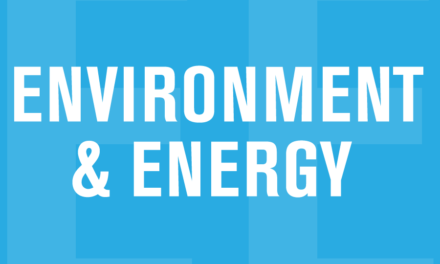Stephen Harper is not the only Conservative politician whose best laid plans have been knocked about by the Saudi-inspired plunge in oil prices. Nova Scotia Tory leader Jamie Baillie has recently put much of his political energy into attacking the Liberal government’s “job killing” ban on fracking. Baillie made the issue a question period staple during the Fall session of the legislature. He implied that by saying no to fracking (which he euphemized into “new ways to create jobs”) the Liberals were perpetuating policies that led to the loss of 9,000 jobs in 2014. The argument was far-fetched then and becomes more dubious now that the Saudi price war threatens the viability of fracking, even in places where there are ample proven reserves of shale oil and gas to economically justify the more expensive recovery method. Nova Scotia is, of course, no such place. As pointed out in a previous post (“The Usual Suspects attack Nova Scotia’s fracking ban”) estimates of shale gas reserves in Nova Scotia are somewhat suspect.
So although the drop in oil prices is likely to be mainly negative for the environment – more gas guzzlers on the road, less investment in green energy for example – one positive benefit will hopefully be less chatter about fracking. But before leaving that debate, it is worth delving a little further into the resource estimates, the dubious nature of which have generally been ignored by Jamie Baillie and other pro-frackers. Without identifying the source, the Wheeler report suggested a range of from 17 to 69 trillion cubic feet (tfc) of shale gas reserves in the Windsor-Kennetcook block, the only area where significant exploraiton has been conducted. The lower figure likely comes from World Shale Gas, published in May 2013 by the U.S. Energy Information Administration. http://www.eia.gov/analysis/studies/worldshalegas/pdf/chaptersi_iii.pdf?zscb=60384331
But Wheeler’s report seemed to embrace the higher figure in the range by developing a benefit scenario based on reserves of 100 tfc. Another report prepared for the government in 2014 by the Boston-based London Economics International LLC (Nova Scotia power sector: Current situation, recent developments and challenges, and SWOT analysis) also estimates the resource at 69 tfc and provides a source for the number – a January 2014 report by Jed Chong and Milana Simikian for the Library of Parliament (Shale Gas in Canada: Resource Potential, Current Production and Economic implications).
A Library of Parliament estimate sounds pretty authoritative, at least until you check the footnotes. There it is revealed that the resource estimate “has not been verified by public authorities” but comes from a 2009 article in Natural Resources magazine. NR is an insert in Atlantic Business magazine, which is an unabashed booster of the energy industry. NR magazine’s source for the 69 tcf estimate is the Colorado-based Triangle Petroleum, which drilled five wells in the Windsor-Kennetcook area between 2007 and 2009 (and is still trying to dispose of the waste water produced as a result). Triangle had used the estimate in a May, 2008 press release attributing it to the “independent reserves evaluation engineering firm, Ryder Scott Company Petroleum Consultants.” With that endorsement, the 69 tfc estimate may look pretty solid – except for one thing. It was based on only two wells. Three more wells were drilled in 2008 and the first half of 2009, with what seem to be less than promising results, as reported on a company website. http://www.trianglepetroleum.com/?page=overview
Exploration Programs
From May 2007 to June 2008, Triangle executed the first phase of the Windsor Block exploration program consisting of a 2D and 3D seismic program, geological studies, and drilling and completing two vertical test wells (Kennetcook #1 and Kennetcook #2). From July 2008 to March 2009, Triangle executed the second phase of the Windsor Block shale gas exploration program consisting of drilling three vertical exploration wells (N-14-A, O-61-C and E-38-A) and completing one of these wells (N-14-A).
During the first quarter of fiscal 2010 (Feb 1 – Apr 30, 2009), Triangle tested the N-14-A well, which was completed in early December 2008 with a four-stage perforation and fracture treatment. The frac flowback operations were suspended in April 2009 after the well recovered 15% of load fluid but negligible gas production. Subsequent analysis indicates an unusually high insitu stress regime in the immediate vicinity of the well, likely due to proximity to a major fault, which contributed to fracture ineffectiveness. Completion operations on the O-61-C well commenced in March 2009 and continued into early May. Several tight sand and carbonate intervals were perforated but not fracture-treated. Triangle obtained useful geological information from the well that will help guide subsequent exploration efforts. No hydrocarbons flowed from the well.
During the second quarter of fiscal 2010 (May 1- July 31, 2009), operations on the E-38-A well moved forward with three zones having been perforated and treated with diagnostic “micro-fracs.” Engineering data from these tests are currently being evaluated. E-38-A evaluates an area of the Windsor Block which is structurally and geologicall y distinct from previous wells drilled in the field. Also in the second quarter, the two wells drilled in 2007, Kennetcook #1 and Kennetcook #2, were re-entered to isolate and test individual zones to identify the “gassiest” intervals in each well. From these tests, it appears the fracture treatments undertaken previously have commingled multiple zones together, making it difficult to separate gas from water in the subsurface.
Thus ended Triangle Petroleum’s exploration activities in Windsor area, but the the relatively optimistic resource estimates from the initial test wells linger on, given credence by repetition in government or quasi-government documents. They should be taken with a grain of salt.
-30-





